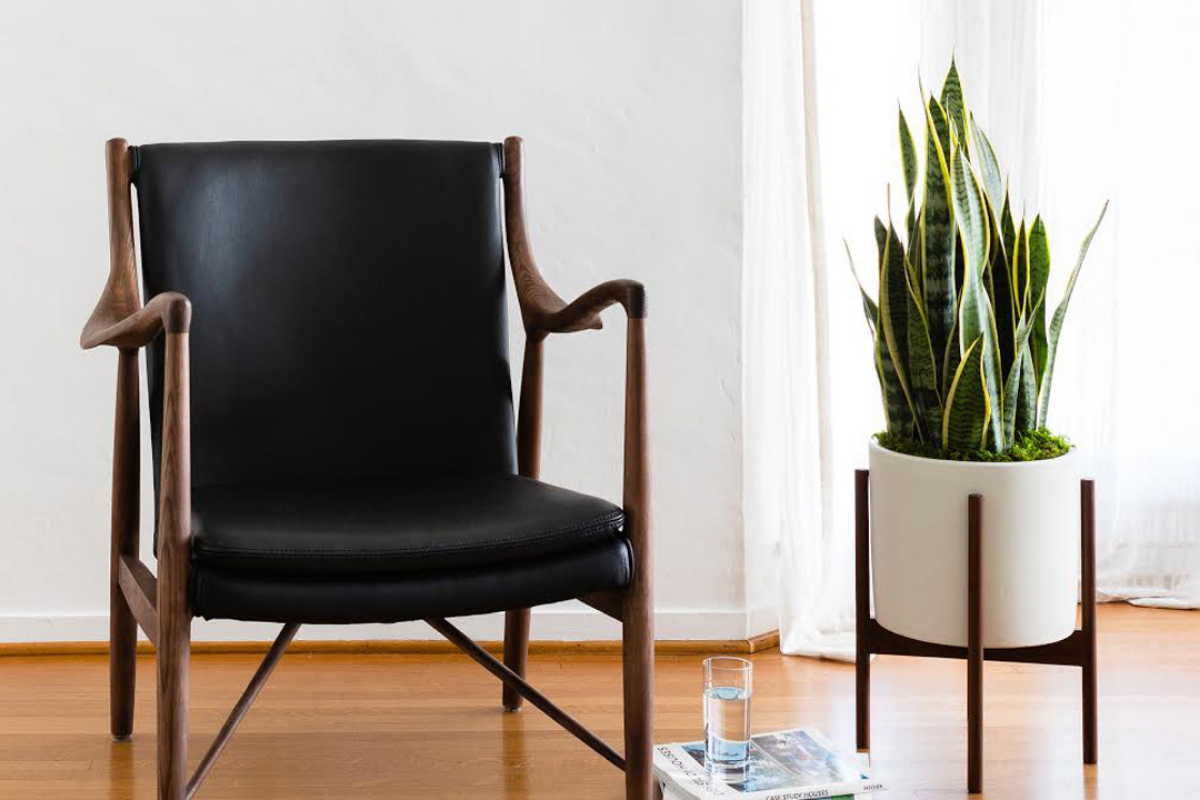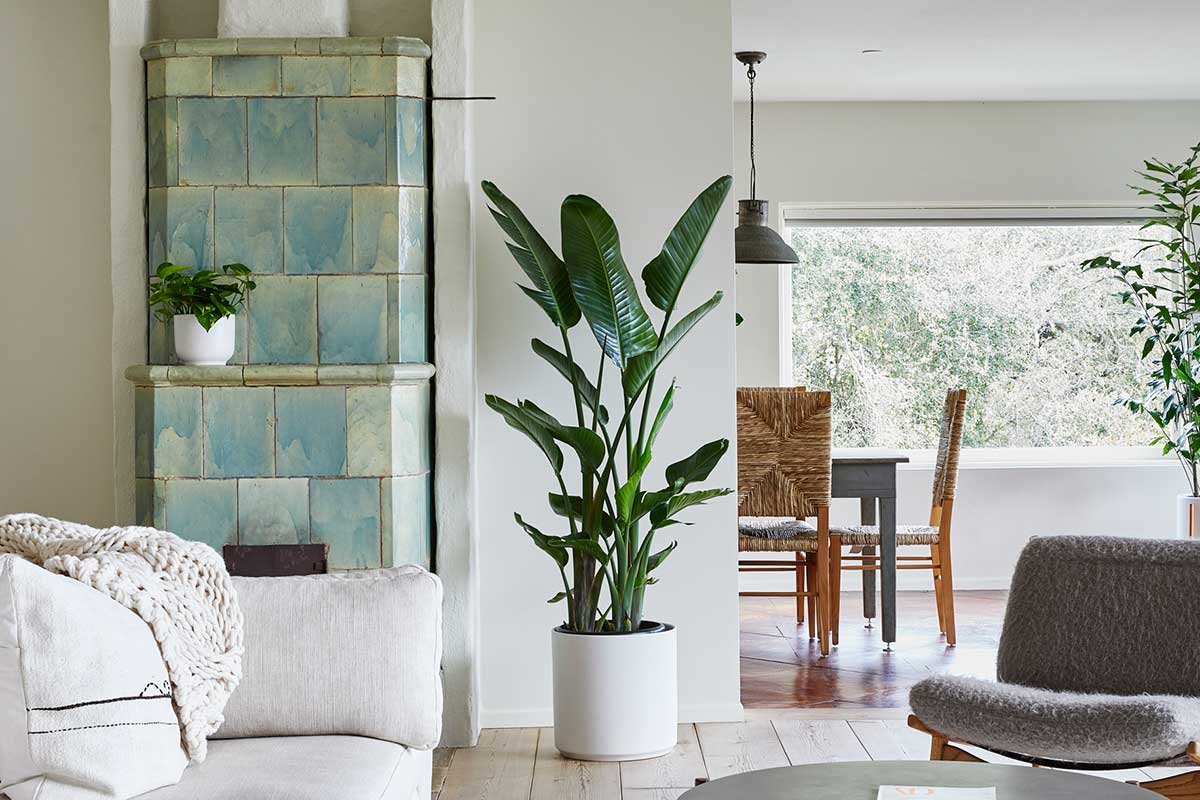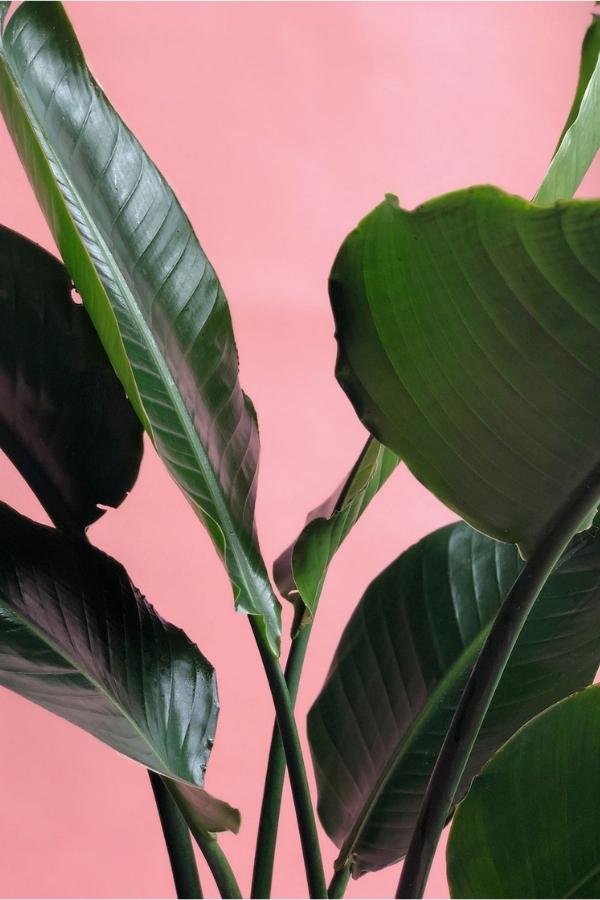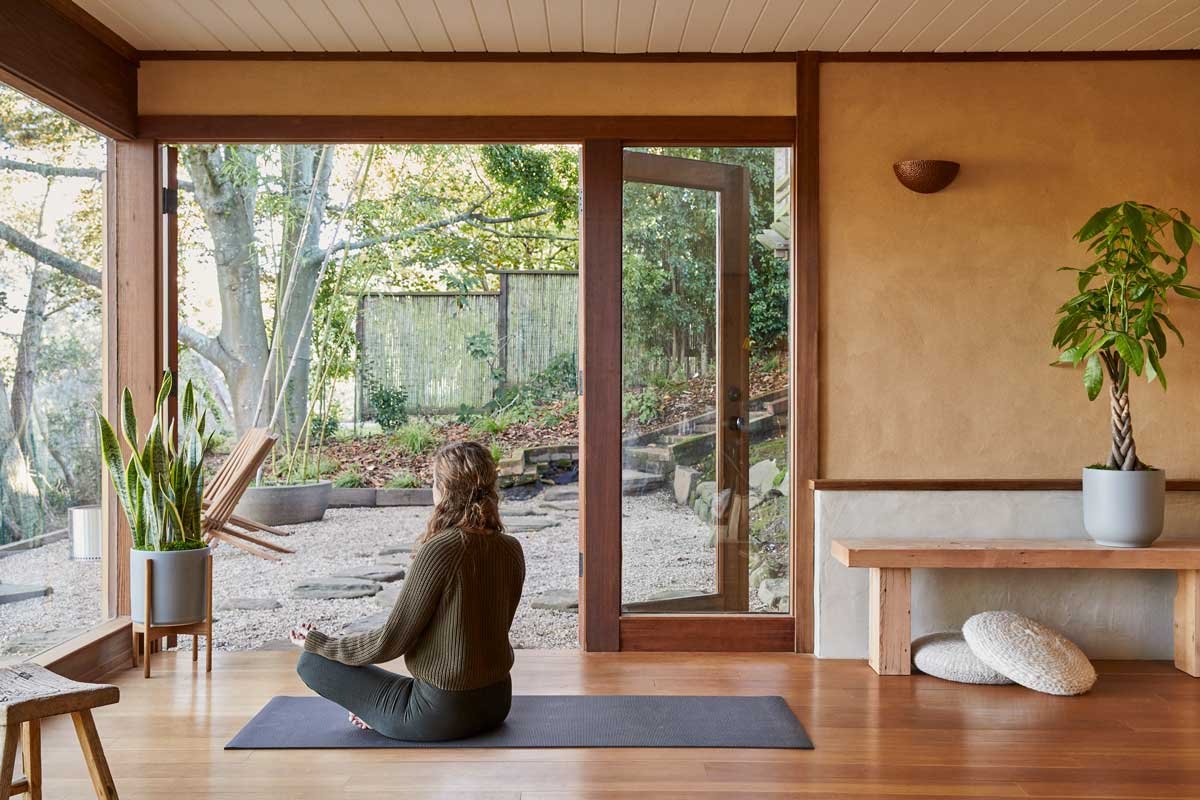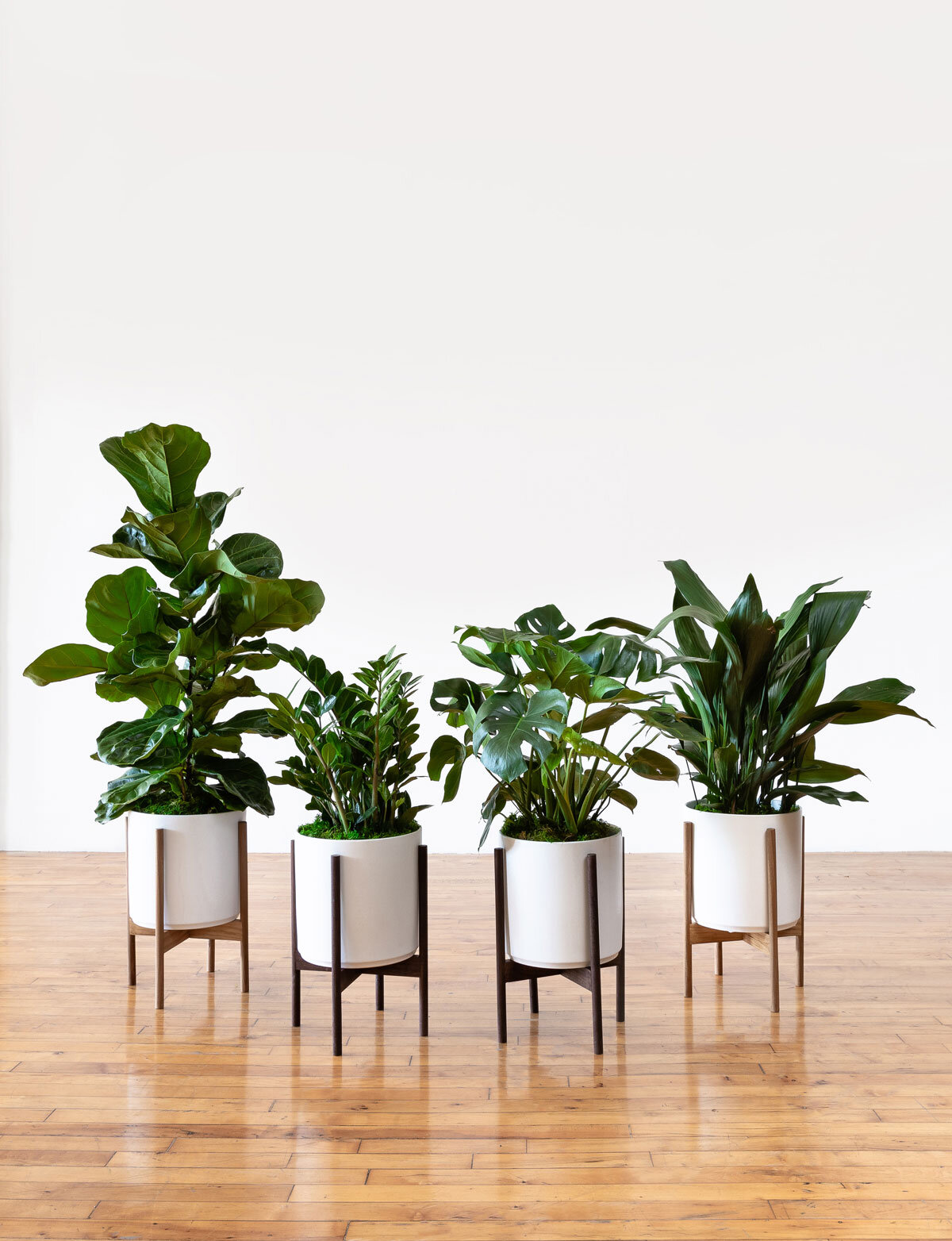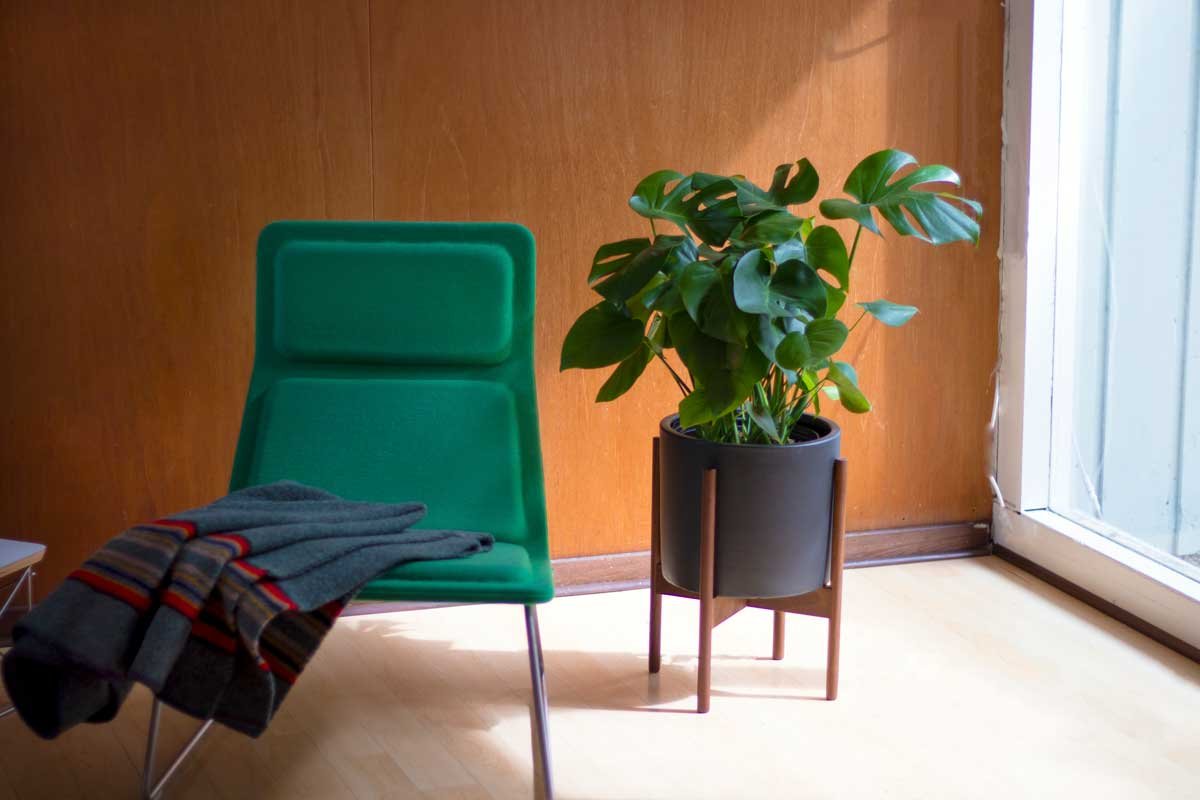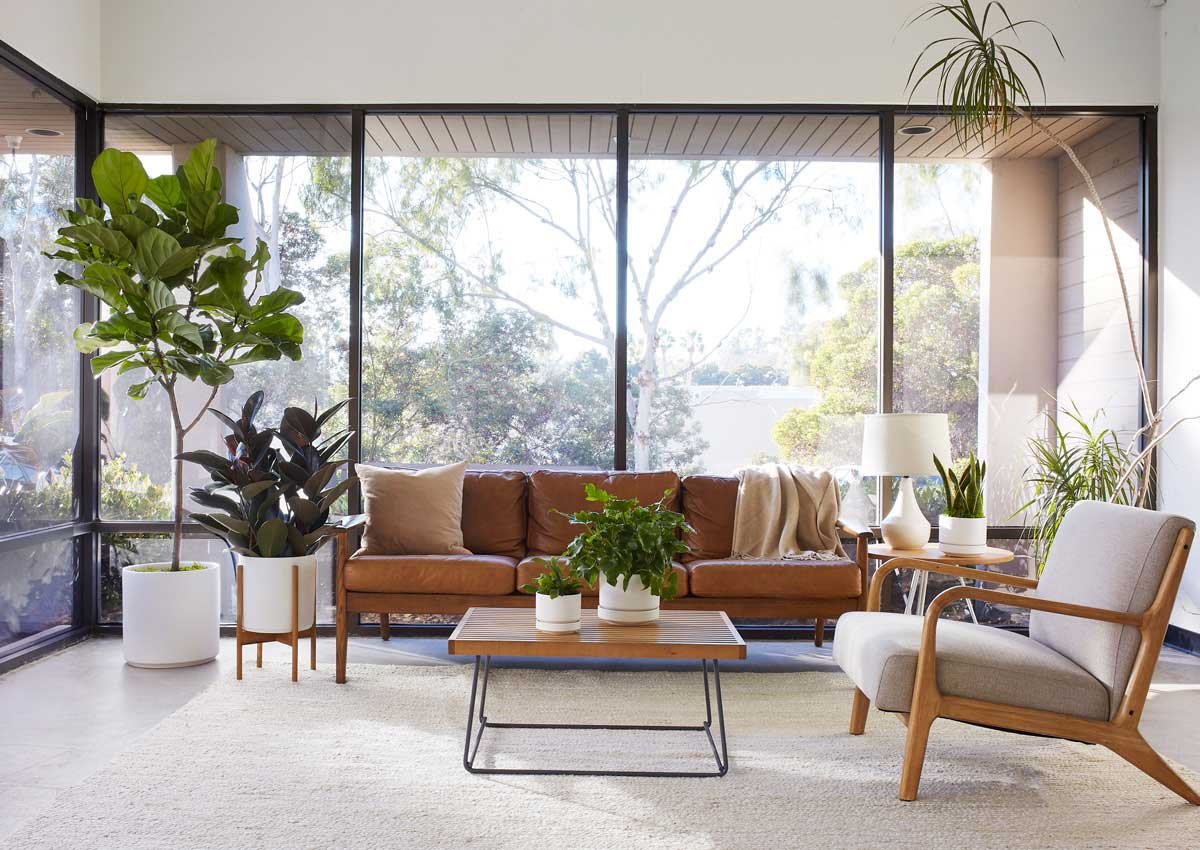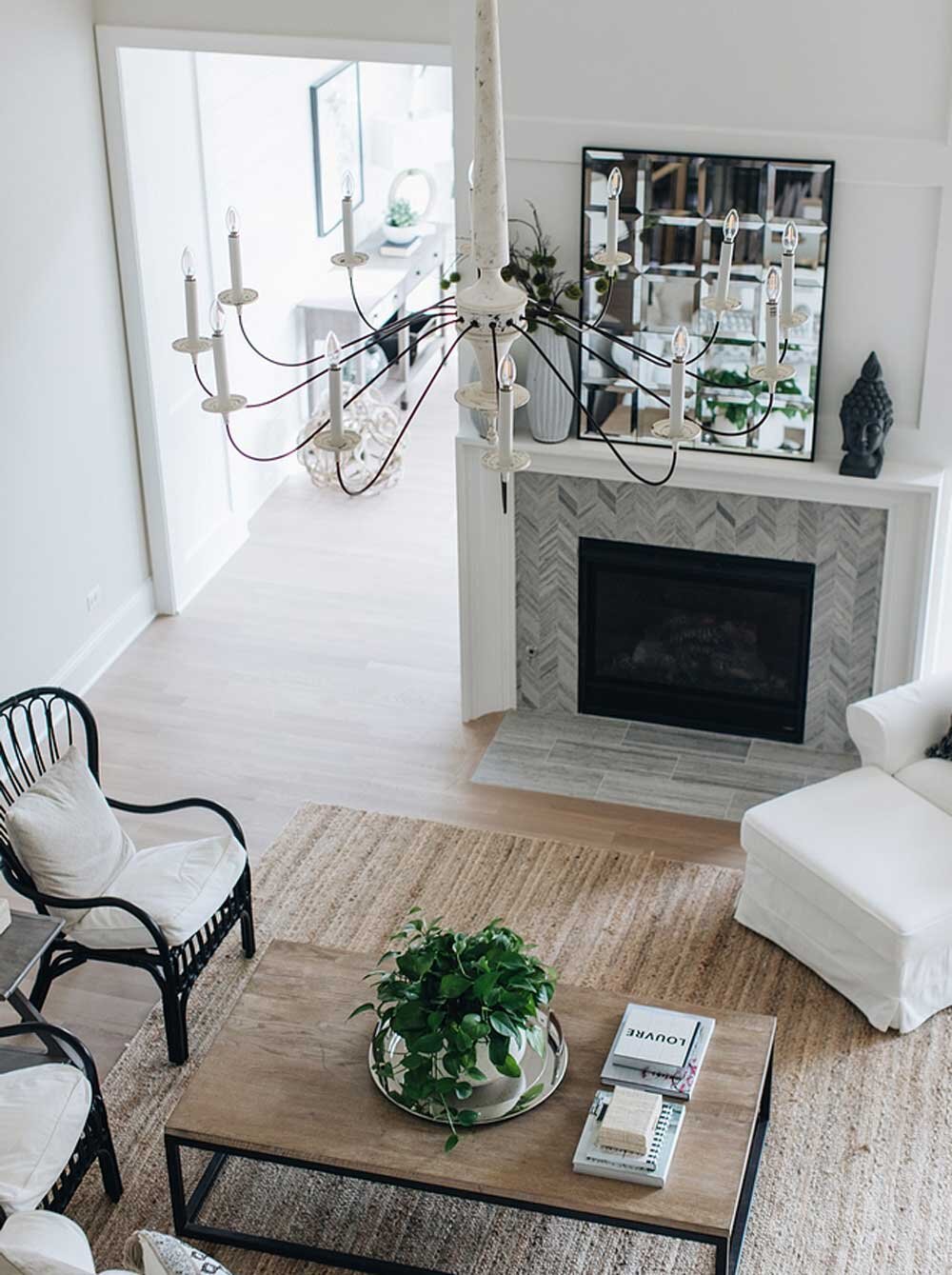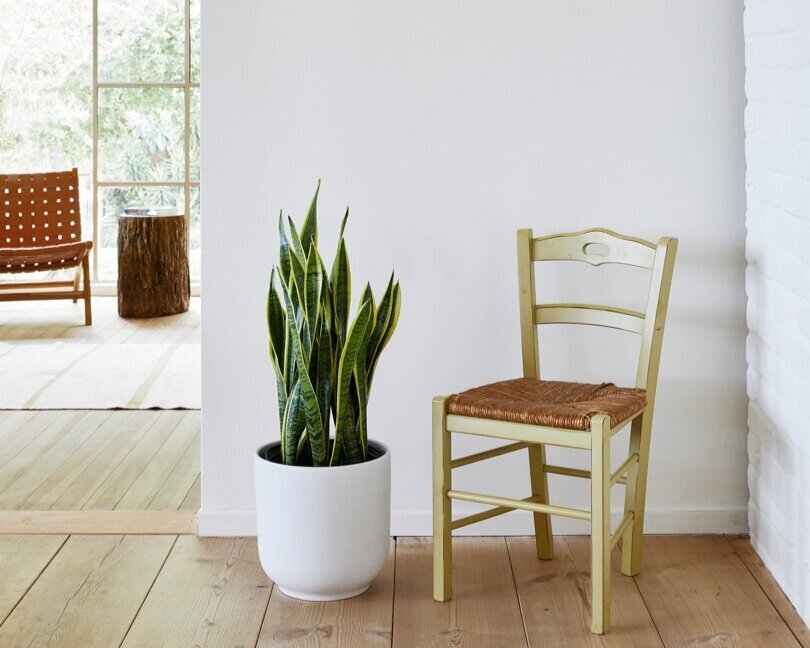Styling a modern space can be challenging, we know! When you consider that modern spaces often hinge on a “less is more” aesthetic, that can mean that extra consideration and care goes into every piece of decor you use. The modern style is typically clutter-free, with streamlined decor, a neutral palette, and well-considered pops of color. And when it comes to adding greenery, there are additional considerations like care requirements, overall appearance and lighting needs. But selecting a perfect plant for your modern style doesn’t have to be a herculean task! We have selected the absolute best plants for modern spaces based on a few simple tenets: a gorgeous look, easy-care disposition and flexible light requirements. Read on to learn more!
Dracaena Lisa
The ideal statement floor plant needs to pack a punch. An unforgettable plant for a modern space will feature lots of lush foliage, towering height, and will always look healthy. That’s why the Dracaena Lisa is one of the very best options for a modern look. They are naturally quite tall (up to six and a half feet!) and because they are a genuinely easy-care indoor variety, keeping them in tip-top shape is simple. They can tolerate low light, need watering only when their topsoil is dry, and rarely require special care. Done and dusted!
Fiddle Leaf Fig Tree
If you’re looking for a dose of absolute elegance, the Fiddle Leaf Fig Tree is a shoo-in. You’ve probably seen these gorgeous trees in the glossy pages of interior design magazines- or even in photos of well-considered spaces from the 1970s-80s. The history of the Fiddle Leaf Fig Tree, or Ficus lyrata, is rich- and so is its aesthetic. Be prepared for a glorious diva of a statement plant that will require ample bright, indirect light and some special attention. Fiddles are well worth the extra devotion and care, but can be best for owners with moderate plant care experience. Still, you’d be hard pressed to find a more iconic plant for a modern space.
Bird of Paradise
We think it’s a given that any modern space needs a Bird of Paradise. Immediately cheerful, this gentle giant brings plenty of texture and height to enliven streamlined spaces. Their vibrant coloration adds a pop of color to neutral palettes and modern furnishings, and creates a natural focal point. The best news of all? They’re beyond low-maintenance. They require direct sun (as much as possible!) but beyond that, all they need is light watering when their topsoil is dry. A perfect statement plant for the modern aesthete on the go.
Monstera Deliciosa
If you’re looking to add living sculpture to an artful space, the Monstera Deliciosa should be at the top of your list! Perfect for adding intrigue and texture to spaces with minimalist decor (or for imbuing a playful space with a pop-art punch!) the Monstera Deliciosa is having a moment. But don’t worry, it’s popularity is well-earned: and we think that the Monstera’s status as a covetable it-plant is here to stay. After all, they’re incredibly easy to care for, grow abundantly, and have some of the most enchanting foliage we’ve ever seen! Your mood will be boosted every time your eyes come to rest on an abundant Monstera- and it’s easy to keep them in thriving good health. They’re adaptable to medium, indirect light, and need water only sparingly.
Bird’s Nest Fern
If you’re considering a humidity-loving jewel of a plant for your stylish bathroom, look no further than the Bird’s Nest Fern. Modern bathrooms are often neutral, and adding some texture can work wonders for illuminating the overall aesthetic of the space. Talk about leafy goodness: the Bird’s Nest Fern’s iconic, quill-shaped foliage adds an instant dose of enchanting, lush texture, and with their tropical origins, they adore the additional moisture that bathrooms receive.
Calathea Rattlesnake
Need some intriguing color for your Tulip Table? The Calathea Rattlesnake is here to save the day for your Saarinen! Featuring super-vibrant, fluttery foliage in shades of emerald and burgundy, this easy-care medium plant was made to dazzle on modern surfaces. This tropical variety prefers bright, indirect light, but it’s also adaptable to shady areas.
Dracaena Compacta
Do put this baby in a corner. Corners are often overlooked when styling a room, but they’re so much more than dust-collectors. All they need is a little green! And the Dracaena Compacta is a dream plant for corner placement. Featuring a laddered aesthetic, with playful pom-poms of lush, wild foliage, Dracaena Compactas have charm to spare. And because they do perfectly well with medium light, you don’t need to worry that they’ll languish in a previously unsung corner. They were practically made for that spot!
Pilea Peperomiodes
Enter the space-age: if you’re looking for kinetic appeal and a sense of play, the Pilea Peperomiodes is the plant variety for you. With flying-saucer foliage and a lush structure of stems, the Pilea easily injects charm and an artful, sculptural attitude into any space. Perfect for shelves and coffee tables, the Pilea will thrive near a window that receives bright, indirect light.
Snake Plant
The Snake Plant is a gold standard for a reason: these low-maintenance beauties have gorgeous variegation on their slender blades, achieve stunning height, and are natural air purifiers. Set a Snake Plant anywhere you want to add a bit of effortless style, and enjoy their mood-boosting properties (as well as their renowned reputation for bringing their owners good fortune)!
King of Hearts Anthurium
If your space’s palette is a mix of muted tones, the King of Hearts Anthurium is just what you need: a lively and enchanting pop of color that’s perfect for tabletop placement. We guarantee that you’ve never seen a crimson quite this vibrant- and the spade shape of their blooms is immediately Mid-Century (think poker cards, tiki bars, and Lewis-Carroll style charm).
Now that you’ve selected your plants, it’s time to set yourself up for success! Information on how to care for the plant varieties above, as well as guidance for troubleshooting common plant care issues, is all available at La Residence.
Indoor plants, potted & delivered
Premium plants paired with stylish ceramics, plus lifetime access to Plant Doctor support.









